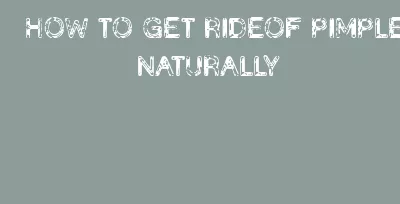EntertainmentNews And PoliticsPersonal Care And BeautyHealth And LifestyleOthersMotivationalsSports And FitnessNewsHealthCelebrityIT And Computer ScienceStoriesScience And TechnologyBusiness And MoneyGeneralTechnologyBeautyQuestions And AnswersAgricultureArts And EducationFitnessPoliticsBusinessLifetipsSportsLifestyleEducationMotivationFamily And HolidaysReligion And Principles
DemuchGS
Computer Scientist : Am A Skillful Person, I Love Advertising And I Am Into Blogging, Am A Content Creator, IG: Demuchgs, Facebook: Demuch Spacial, Page: Official Demuch
Wants to meet Just Friends
Articles
561
Followers
32
profile/919images-01.jpeg
DemuchGS

HOW TO GET RIDEOF PIMPLES NATURALLY
~0.4 mins read
profile/919images-01.jpeg
DemuchGS

5 Parts Of Your Body You Should Clean Better
~1.9 mins read
We have our bath daily, however, there are some parts of the body that we often neglect and ignore. The specks of dirt in this area can cause bacteria build-up, which can also lead to foul smell.
Below are some body parts you might not be taking adequate care of:
Behind your ears
If you do not wash your hair on a particular day you are also not cleaning the area behind your ears. This part of your body can collect bacteria and dirt. Sebum is secreted by the sebaceous gland present in this area to the skin moist but this secretion can cause a smell. Use a cotton swab to clean the area behind your ears even when you are not washing your hair.
If you do not wash your hair on a particular day you are also not cleaning the area behind your ears. This part of your body can collect bacteria and dirt. Sebum is secreted by the sebaceous gland present in this area to the skin moist but this secretion can cause a smell. Use a cotton swab to clean the area behind your ears even when you are not washing your hair.
Your belly button
The belly button or the navel is probably the most ignored part of the body. If it is not cleaned regularly, it will not only lead to a buildup of dirt but also bacteria. The dark, moist environment of the belly button is ideal for the breeding of bacteria. The breeding of bacteria can cause foul smell and infections. Always dry your belly button with your towel after a shower and clean it with a cotton swab.
The belly button or the navel is probably the most ignored part of the body. If it is not cleaned regularly, it will not only lead to a buildup of dirt but also bacteria. The dark, moist environment of the belly button is ideal for the breeding of bacteria. The breeding of bacteria can cause foul smell and infections. Always dry your belly button with your towel after a shower and clean it with a cotton swab.
Tongue
Most of us often think that dental hygiene includes cleaning the teeth and gums. Some think using mouthwash is enough to clean the tongue, which is not true. The tongue has ridges and bumps where bacteria can easily hide. This cannot just lead to bad breath but also tooth decay. Thus it’s important to clean the tongue every day using a tongue scraper.
Most of us often think that dental hygiene includes cleaning the teeth and gums. Some think using mouthwash is enough to clean the tongue, which is not true. The tongue has ridges and bumps where bacteria can easily hide. This cannot just lead to bad breath but also tooth decay. Thus it’s important to clean the tongue every day using a tongue scraper.
Back of the Neck
If you have long hair, the back of your neck can be warm and moist, which can make it a perfect place for bacteria and mites. You can use soap and water, wet cloth, or a loofah to clean the area.
If you have long hair, the back of your neck can be warm and moist, which can make it a perfect place for bacteria and mites. You can use soap and water, wet cloth, or a loofah to clean the area.
Your toes
If you wear flip flops, socks, shoes, or go barefoot, dirty stuff quickly accumulates between your toes, and it’s an often neglected area of the human body. According to UPMC Health Beat, your toe jam can come from things like eczema, athlete’s foot, corns, thickening of the skin on the foot, and even scabies. It smells gross, feels worse, and it’s super easy to make sure it’s not a thing: just wash your feet, including between all of your toes, with soap and water. Talcum powder or cornstarch sprinkled between your toes can help keep them dry and prevent infection.
If you wear flip flops, socks, shoes, or go barefoot, dirty stuff quickly accumulates between your toes, and it’s an often neglected area of the human body. According to UPMC Health Beat, your toe jam can come from things like eczema, athlete’s foot, corns, thickening of the skin on the foot, and even scabies. It smells gross, feels worse, and it’s super easy to make sure it’s not a thing: just wash your feet, including between all of your toes, with soap and water. Talcum powder or cornstarch sprinkled between your toes can help keep them dry and prevent infection.
Advertisement

Link socials
Matches
Loading...
